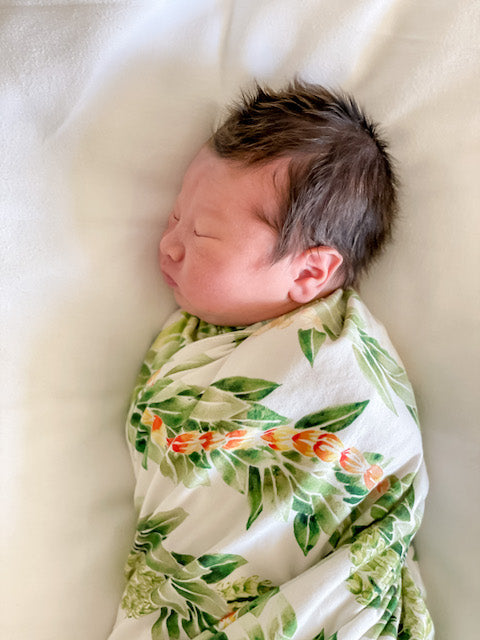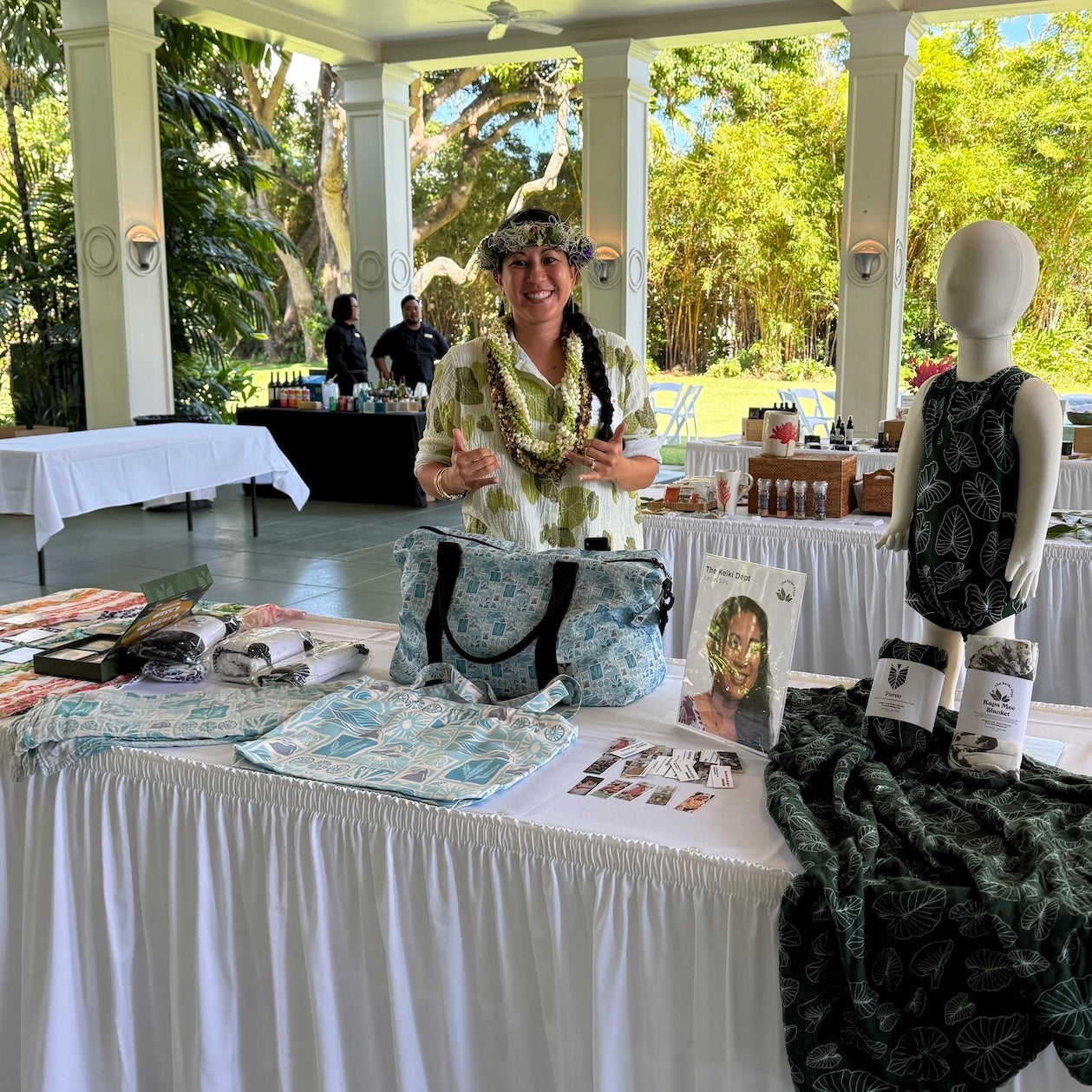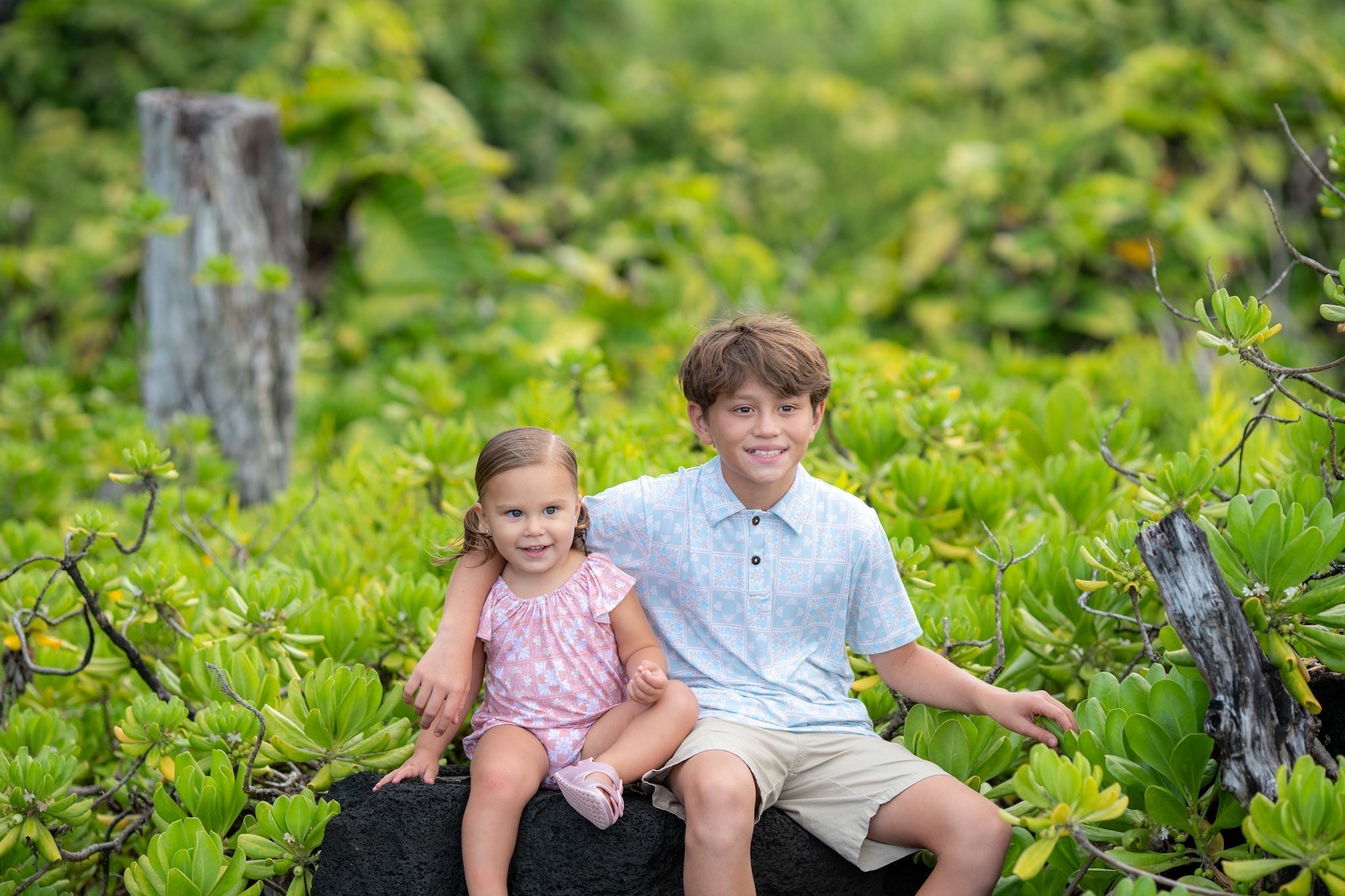
The Beautiful Tradition Your Keiki Should Know About Lei
When people think of Hawaiʻi, a lei is often the first image that comes to mind. It’s a symbol recognized around the world that conveys a welcoming feeling and highlights the natural beauty of our islands. But in Hawaiʻi, lei are more than just pretty garlands. They are woven threads of connection, with a rich history of tradition behind them. Beyond the fragrant blossoms and colorful leaves, lei carry stories and significance rooted deep in Hawaiʻi’s history.
Giving a lei is an expression of aloha, a tangible symbol of affection, honor, or reverence. Traditionally, materials are specifically chosen to convey meaning. For example, maile leaves are associated with peace and sacredness, while pikake blooms represent love and romance. Ti leaves are used for protection and blessings, and kukui nuts symbolize enlightenment. A well-crafted lei is never just decorative — it's a message, carefully composed.
This tradition stems all the way back to ancient Hawaiʻi. Hiʻiakaikapoliopele, more commonly known as Hiʻiaka, was Pele’s sister. She is credited with bringing the seeds and cuttings of plants used in Hawaiʻi for both healing and lei-making. For this reason, Hiʻiaka is often called the goddess of lei making. She embodies the care, intentionality, and spiritual connection needed to create a meaningful lei. She is also the protector of those who travel through the forest, where lei makers gather native materials. Even today, before foraging for plants in remote areas, many lei makers invoke Hiʻiaka for guidance and safety. In this way, her legacy lives on not only in stories, but in practice.
This connection between lei and the people of Hawaiʻi is also reflected in the way keiki (children) are described. Poetically, a child is called a lei, because they are the weaving of their parents’ and ancestors’ love. The ʻōlelo noʻeau (Hawaiian proverb), He lei poina ʻole ke keiki (A lei never forgotten is the beloved child), illustrates how cherished and integral children are to the ʻohana (family). Like lei, children are shaped with intention and loved deeply. Maui-based lei maker Wileen Ortega explains, “Lei is a symbol of love and affection, but also… a symbol of a child, of a keiki.” Both are fragile yet strong and serve as links that bind generations together. She goes on to explain that when you wear a lei, it rests close to your heart, much like how you cherish and hold a child near.
Making a lei is not a casual act. It requires patience, attention, and a deep respect for the ʻāina (the land). Traditional lei makers understand when and where to harvest and always give back in gratitude. The act of stringing together each element becomes a quiet meditation, a way of expressing one’s feelings without words.
Today, lei are found at graduations, birthdays, weddings, and airports. They’ve become familiar but are never ordinary. To wear or give a lei is to take part in a tradition that predates the written word and still blossoms today. So the next time you give or receive a lei, take a moment to appreciate its deeper meaning and the aloha, intention, and history woven into every strand.
Mahalo to the resources used for this article:
-
Dimple. “The History and Significance of the Lei in Hawaiian Culture.” Hawaii Travel Guide, Hawaii Activities.com, 29 Mar. 2024, www.hawaiiactivities.com/travelguide/the-history-and-significance-of-the-lei-in-hawaiian-culture.
-
Greco, Gayle ‘Kaleilehua’. “He Mo‘olelo kō ka Lei”: A Story of the Lei. Ke Ola Magazine, 13 Dec. 2018, https://keolamagazine.com/culture/story-of-the-lei/.
-
“Hiʻiakaikapuaʻenaʻena – Goddess of Lei Making.” Lei Day.Org, 8 Jan. 2018, www.leiday.org/goddess-of-lei-making/.
-
“Lei Traditions: What Makes Them Special at Luaus.” Mauka Warriors Luau, 28 Dec. 2024, maukawarriorsluau.com/2024/12/27/lei-traditions-what-makes-them-special-at-luaus.
-
Moseley, Megan. “Hawai’i’s Lei Day Is About So Much More Than Flowers.” National Geographic, 1 May 2024, https://www.nationalgeographic.com/culture/article/lei-day-hawaii-native-plants-history.nationalgeographic.com.
-
“Nā Lei.” Lei Day.Org, 25 Dec. 2024, www.leiday.org/the-lei/.




Leave a comment
This site is protected by hCaptcha and the hCaptcha Privacy Policy and Terms of Service apply.